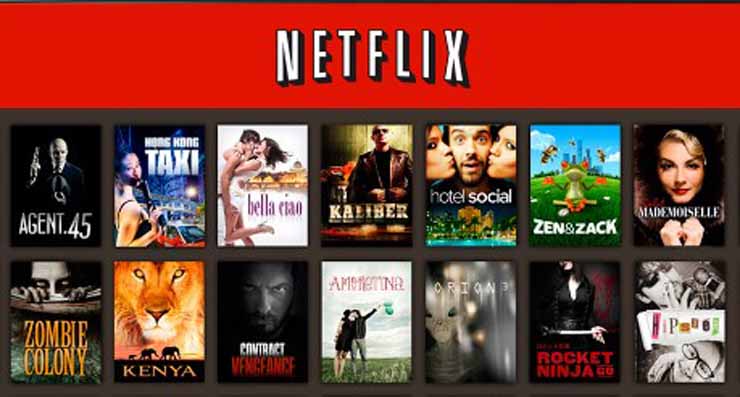Netflix is turning into cable TV: It has Suits, old movies, and WWE? What else does Netflix require to be a perfectly fine cable channel?
This past weekend, I was sitting in a hotel room in Memphis, staring out at the parking lot turned ice skating rink, wishing I could just turn off my brain for a few hours. I opened Netflix in the hopes of finding a movie that would provide me with some entertainment for the evening. Scrolling down to the top ten, I encountered a who’s who of the 2010s and 2020s. Cowboy & Aliens, a 2011 flop with a great cast, made the list. Queenpins, the 2021 flop with a stellar cast, was also present. The Legend of Tarzan, a 2016 flop with an impressive cast, ranked first on the list. Rounding out the top ten were a Sylvester Stallone film from 2019 and a handful of new releases that I had not heard of until I saw them on the list.
In a highly competitive streaming market where every streaming service competes for your limited dollars, Netflix’s top ten list could be mistaken for TNT’s lineup. However, it appears that this is also Netflix’s plan. It just announced that it would be the new official home of one of basic cable’s crown jewels, WWE Monday Night Raw. And, yesterday, the company announced the departure of Scott Stuber, who oversaw Netflix’s three consecutive years as the most nominated film studio in the Academy Awards.
Netflix’s days of chasing prestige may be coming to an end, with this abrupt reversal of the streaming golden age being replaced by something akin to Spike TV circa 2005. Or the USA Network in 2011. That’s not necessarily a bad thing. Both networks were adept at presenting me with entertaining old films and television shows while also capturing programming successes such as WWE, US dubs of popular and outrageous game shows from other countries, and Suits.
The problem is that these are also part of Netflix’s streaming strategy in 2024, when the economics of streaming are still in flux and, thus far, quite different from cable. (Although Suits has been so successful on Netflix that USA is now returning to producing similar content). Netflix’s rapidly expanding advertising business will most likely cover the cost of WWE rights. “This should add some fuel to our new and growing ad business,” Netflix co-CEO Ted Sarandos stated in an earnings call following the announcement. However, if it does not, spending $5 billion to secure the rights to WWE Monday Night Raw for the next ten years means Netflix subscribers may face another price increase in the future, regardless of whether they enjoy wrestling.
This also appears to confirm an issue I’ve been experiencing with Netflix for quite some time. It’s got a programming problem. In its quest to be the best streamer, it did not target specific audiences, as most other streamers did. Instead, Netflix has attempted to reach every audience. First with original content, and now simply purchasing the streaming rights to things. So it includes not only the long-awaited and troubled adaptation of Avatar: The Last Airbender, but also Young Sheldon, Suits, and a plethora of foreign language programming.
Netflix’s current programming strategy appears to revolve around putting established successes from other companies out there and hoping no one notices that Netflix isn’t doing a lot of really good originals of its own. During the earnings call, Sarandos stated that licensed content was a better deal when running an advertising business, before quickly noting that the service’s most-watched shows remained primarily originals (a few K-dramas, such as the excellent Crash Course in Romance, cracked the top 20).
When you’re as big as Netflix, relying on much less expensive licensed content isn’t a bad strategy. You make money by spending less on it than on your originals, the place you’re buying from benefits from having it on their service, and everyone appears nice, friendly, and competitive in case the FTC comes calling.
Nonetheless, prices are rising. Netflix currently charges $6.99 for two screens, 1080p, and ads, or $15.49 for two screens and no ads. If there’s a choice between spending that on Netflix’s massive grab bag of stuff and Apple TV’s pretty pristine library of well-made science fiction shows, a science fiction nerd might choose Apple TV because it’s only $9.99. Or they might choose Amazon because they get Thursday Night Football and Prime TV is included with Amazon Prime; Disney because they have children and it starts at $7.99 with ads but costs only $13.99 with no ads; or Paramount Plus because they have lingering cowboy fantasies and want to spend only $11.99.
Eventually, Netflix’s strategy of relying on its size, content purchased from other streamers, and a graveyard of prematurely canceled originals could fail. If it remains the most expensive platform with fewer exclusives, people may simply move elsewhere. But perhaps Roman Reigns (and the new WWE deal) can support the entire enterprise on his exceptional shoulders. It worked for a variety of basic cable channels until streaming came along.
Also Read: Mark Zuckerberg’s new goal is building artificial general intelligence 2024



